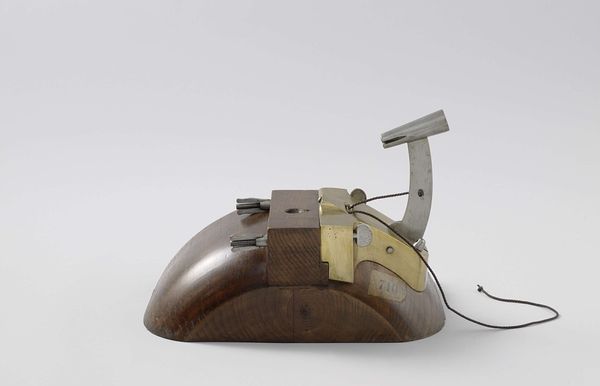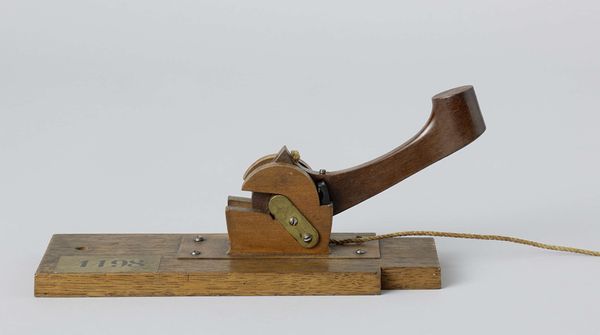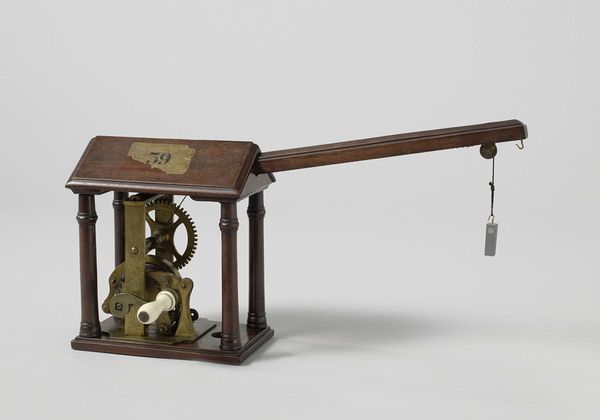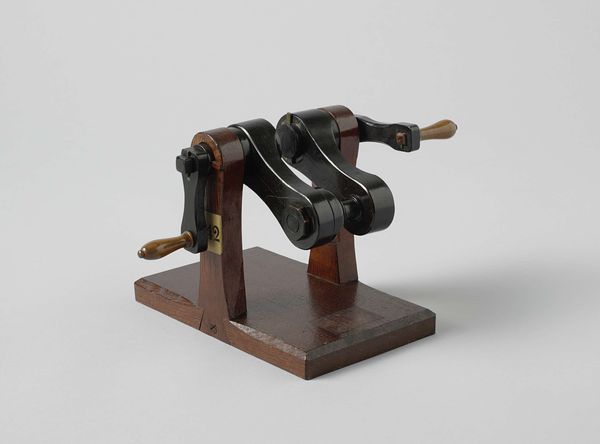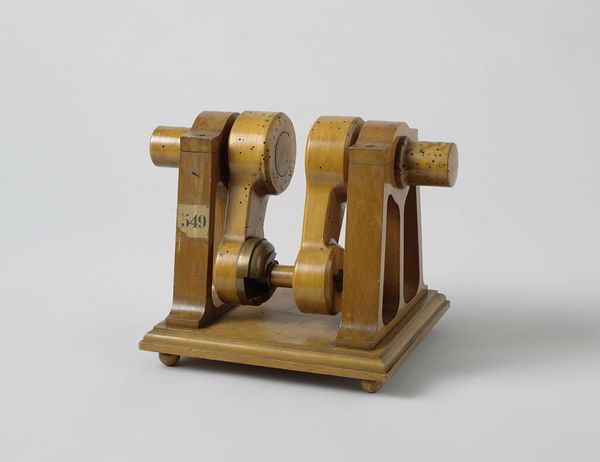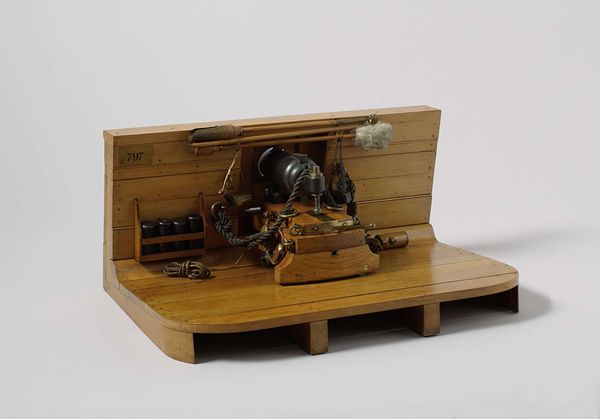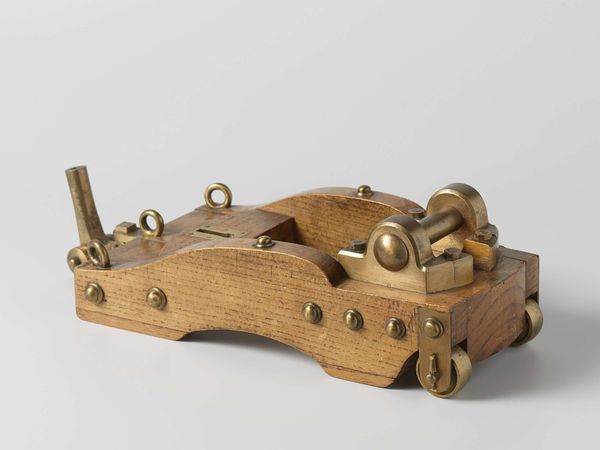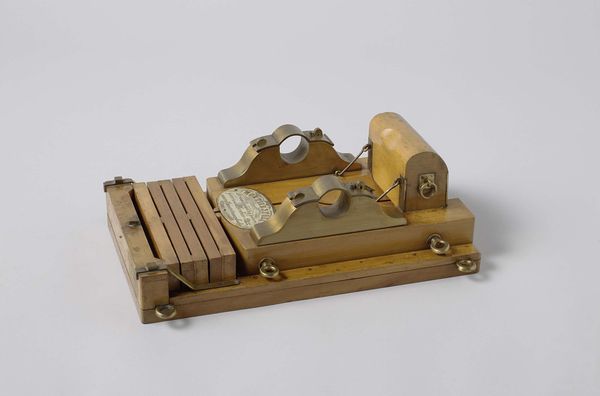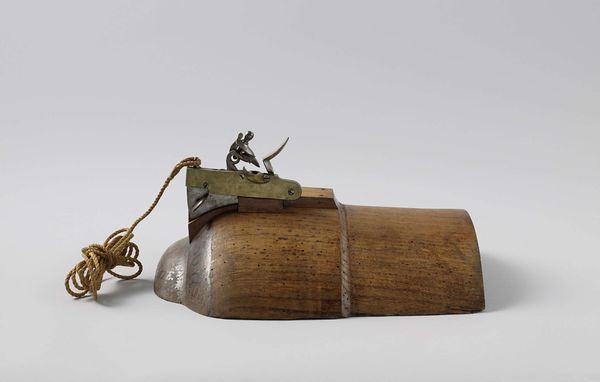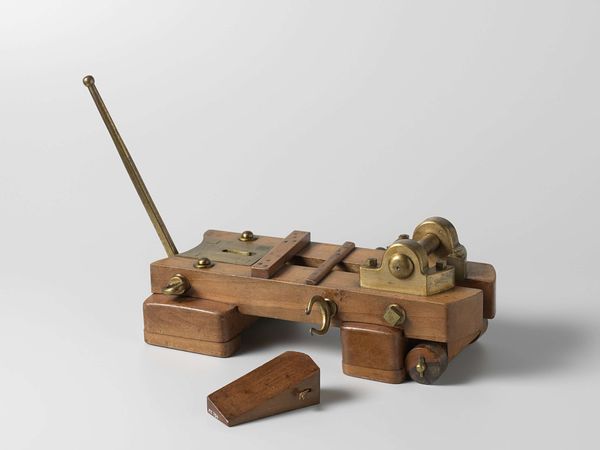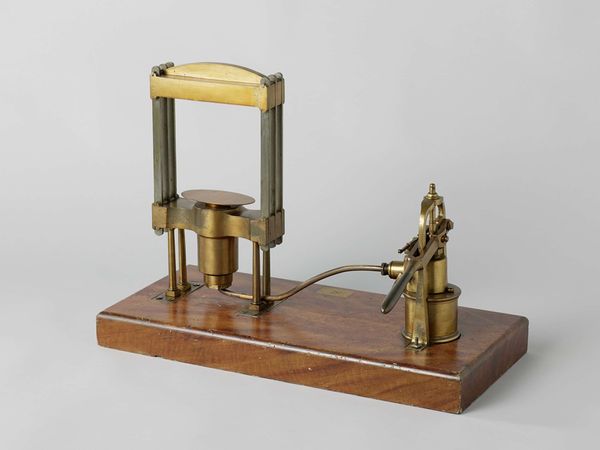
mixed-media, metal, bronze, wood
#
mixed-media
#
metal
#
sculpture
#
bronze
#
wood
Dimensions: height 15 cm, width 22.2 cm, depth 14.5 cm
Copyright: Rijks Museum: Open Domain
Editor: Here we have what's titled "Gunlock (Percussion)," from 1857. It appears to be crafted from mixed media, including metal, bronze, and wood. I’m struck by how functional it seems, yet presented almost as a sculptural object. What's your take on it? Curator: I immediately think of the labor involved in its creation. The combination of bronze, metal, and wood points to a specific kind of industrial process, a marriage of craft and mass production that was emerging in the mid-19th century. Think about the different kinds of workshops needed to produce the wooden base versus the metal components. How does that speak to you? Editor: That's interesting; I hadn't considered the different modes of production. I was mainly focused on the aesthetic of the object itself, the kind of Victorian "gadgetry" feel it gives off. But your emphasis makes me think about who would have made each individual part. Curator: Exactly! The 'Rijkswerf Hellevoetsluis' likely indicates this was produced within a naval dockyard. This situates the piece within a specific socio-economic system. It's not simply an object of aesthetic appreciation but a result of state-sponsored industry and technological advancement. Who would be consuming these tools? What are they building or using these for? Editor: I see. It shifts the focus from pure aesthetics to considering it as a product of industry, reflecting specific skills, resources, and power structures. It really opens it up for a different line of questioning. Curator: Precisely. It forces us to analyze how industrial means transform even a utilitarian object into a symbol of progress and control, right? We see the value of bronze, metal, wood. Editor: Yes, seeing it as part of that material culture of the 19th century provides such a valuable lens for interpretation. Thank you for highlighting that!
Comments
No comments
Be the first to comment and join the conversation on the ultimate creative platform.
